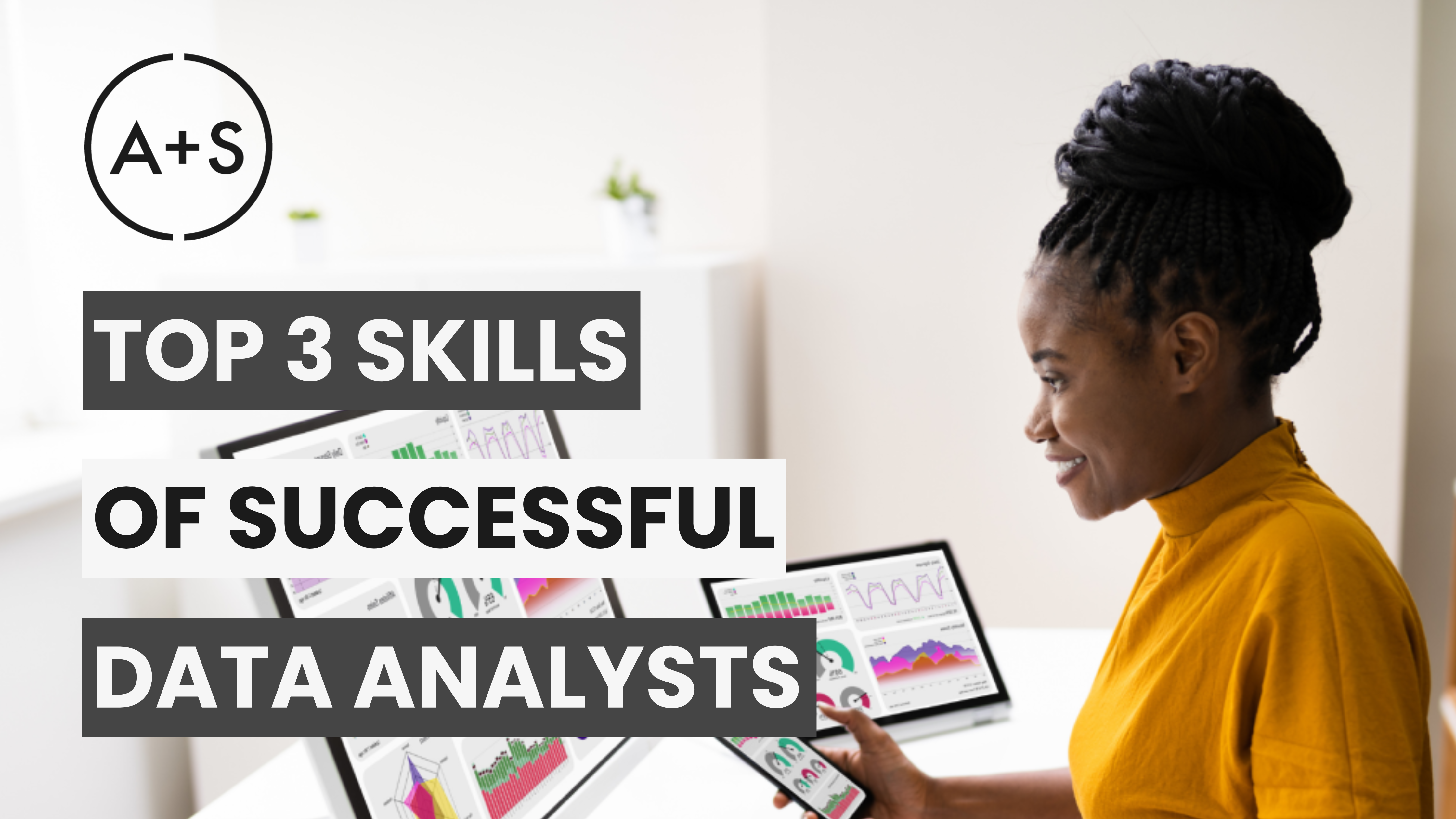In the rapidly evolving world of data analytics, achieving success as an analyst requires a delicate balance between creativity and precision – the “art” and “science” of analysis. While technology has revolutionized what can be achieved, the fundamental qualities that make an analyst exceptional have remained unchanged: curiosity, optimism, and audacity. But what does this mean for today’s data analysts, particularly as AI continues to transform the field?
In this post, we will examine the essential traits that make a data analyst successful and how Artificial Intelligence, specifically Large Language Models (LLMs), is transforming their responsibilities. Let’s take a closer look at the required abilities, mindset, and emerging technology that are shaping the future of data analysis.
What Makes a Great Data Analyst?
Being a data analyst entails more than just processing numbers or developing algorithms. It involves crafting narratives that can influence decisions and bring about impactful change. To excel in this role, one must embody three distinct personas: that of a Data Strategist, a Data Technologist, and a Data Designer. Let’s delve into these roles and see how they work together to create what I like to call the Art+Science mindset.
1. The Data Strategist:
Analysts play a crucial role in connecting the data world with business objectives. A Data Strategist has a comprehensive understanding of how data can drive key business goals and uses this knowledge to turn raw information into valuable insights that enhance performance. To excel in this role, one must have a deep grasp of the company, the competitive landscape, and the most important metrics for success.
The beauty of being a strategist lies in the ability to interpret numbers within the context of real-world business. The more you familiarize yourself with your industry, competition, and customers, the better equipped you will be to analyze how the data reflects or impacts performance. This understanding is a fundamental skill that improves with experience.
2. The Data Technologist:
As a Data Technologist, it is crucial to have strong knowledge of the scientific aspects of analytics. This position primarily involves gathering, organizing, and ensuring accuracy in data. It also requires proficiency in technical tools that support advanced analysis. In the past, this entailed mastering SQL, R, Python, and other technical tools through lengthy learning processes. However, with the advancements in technology, AI-powered tools such as LLMs have become valuable companions for expediting code generation, troubleshooting, and optimization processes.
Tools like ChatGPT, which use LLMs, provide a more streamlined and productive method for tackling technical obstacles. This leads to a transformation of your workflow, allowing you to concentrate on the strategic outcomes of your analysis. With the aid of AI, the need to commit syntax to memory and troubleshoot technical glitches has diminished, giving you the ability to focus on the what rather than the how. While coding languages such as R and Python remain crucial, AI has taken over many of the repetitive and technical tasks, freeing up analysts to tackle higher-level assignments.
3. The Data Designer:
As a Data Designer, one of your main tasks is to present insights in a visually appealing manner. This requires the skill of being able to tell a story through data, ensuring that the information you uncover not only makes sense but also sticks with your audience. Creating visualizations, interactive dashboards, and clear reports are essential for turning complex findings into actionable strategies.
With advanced data visualization tools such as Tableau, PowerBI, and R’s ggplot2, analysts can design highly personalized and impactful visuals that resonate with business audiences. However, the challenge lies in presenting the data in a way that non-technical decision-makers can easily understand. This is where the art of design meets the science of analytics.
The Shift to AI and the Role of LLMs in Data Analysis
The development of AI, particularly through LLMs, has changed the way we approach analyzing data. AI tools now provide analysts with more efficient methods for tackling technical challenges. Imagine having an AI assistant that can write and explain code in real time, saving you from getting stuck debugging or struggling to generate the correct script.
This is significant because AI not only speeds up the coding process but also helps bridge any gaps in technical knowledge. This allows analysts to focus more on strategy and storytelling, rather than spending all their time on coding. LLMs can guide analysts through various tasks such as generating pivot tables, running regressions, and visualizing data trends. They offer multiple approaches, debug code, and suggest best practices.
The integration of LLMs into the coding process means that analysts no longer have to spend months mastering a programming language. Instead, they can focus on understanding the data, formulating key questions, and extracting valuable insights that drive business results. This shift towards analysis rather than coding is empowering a new type of analyst who delivers more value through the use of AI technology.
The Human Element in an AI-Driven World: Why Analysts Still Matter
The emergence of AI, including LLMs, has greatly transformed the way we approach data analysis. However, one crucial fact remains unchanged: AI cannot replace human analysis, it can only enhance it. This was evident during a case study exercise I conducted in my “Automation and AI in Marketing” course.
During the exercise, students were tasked with using an AI-powered analytics tool to evaluate retail performance data from different Sephora locations. The tool provided them with valuable insights with just a click, analyzing sales, marketing efforts, and brand consideration. But the real challenge lay in something the tool couldn’t do: identify important metrics like revenue per square foot or revenue per capita for meaningful comparisons between locations.
The students who excelled in this exercise understood that solely relying on AI for insights was not enough. They realized that to unlock the full potential of the tool, they needed to bring their own analytical thinking, curiosity, and creativity. By generating their own ideas, such as creating a KPI index, these students showed that human interpretation and insight were vital. On the other hand, those who expected the tool to do all the work for them fell short.
This exercise reflects the broader trend in data analytics today. Analysts who thrive in the age of AI are not those who wait for technology to provide all the answers. Instead, they are the ones who use AI to amplify their own skills – those who ask critical questions, explore different methods, and apply their own ingenuity.
In other words, even if AI speeds up decisions, a bad analyst will still make poor choices. But a good analyst – someone who understands their data intricately and applies creative problem-solving – can utilize AI to become exponentially more effective.
Curiosity, Optimism, and Boldness in the Age of AI
As we’ve discussed, AI has the potential to enhance an analyst’s efficiency and effectiveness. However, it is essential to maintain a human element in the process; creativity, curiosity, and critical thinking are key components. Simply mastering the tools is not enough; analysts must also ask the right questions, explore new possibilities, and strive for deeper insights. This requires curiosity, optimism, and boldness.
Curiosity is a crucial trait for analysts in an AI-driven world. Merely accepting the first result from an algorithm is not sufficient. Successful analysts continuously question why the data presents a particular narrative and explore avenues that may be overlooked by AI. From examining overlooked data points to challenging assumptions with innovative hypotheses, curiosity drives progress.
Optimism is necessary for resilience when facing challenges during complex analyses, even with AI assistance. When an AI-generated model does not yield expected results or raises more questions than answers, an optimistic mindset keeps top analysts motivated to find solutions. Instead of seeing these challenges as obstacles, they view them as opportunities for growth.
Boldness sets exceptional analysts apart from the rest. In a field where AI can handle much of the workload, being bold enough to take risks, challenge norms, and ask unconventional questions is what truly distinguishes individuals. While AI can analyze vast amounts of data, it takes a daring analyst to interpret the information in a way that drives tangible change.
Final Thoughts: The New Analyst
As we continue to progress in the age of AI-driven analytics, the success of modern analysts is not solely reliant on their technical expertise or data mastery, but also on their ability to embrace a well-rounded approach that combines both artistic and scientific elements. LLMs are revolutionizing the analyst role by making coding more user-friendly, allowing analysts to devote more attention to addressing business obstacles. Nevertheless, timeless qualities such as curiosity, optimism, and boldness remain essential for success.




